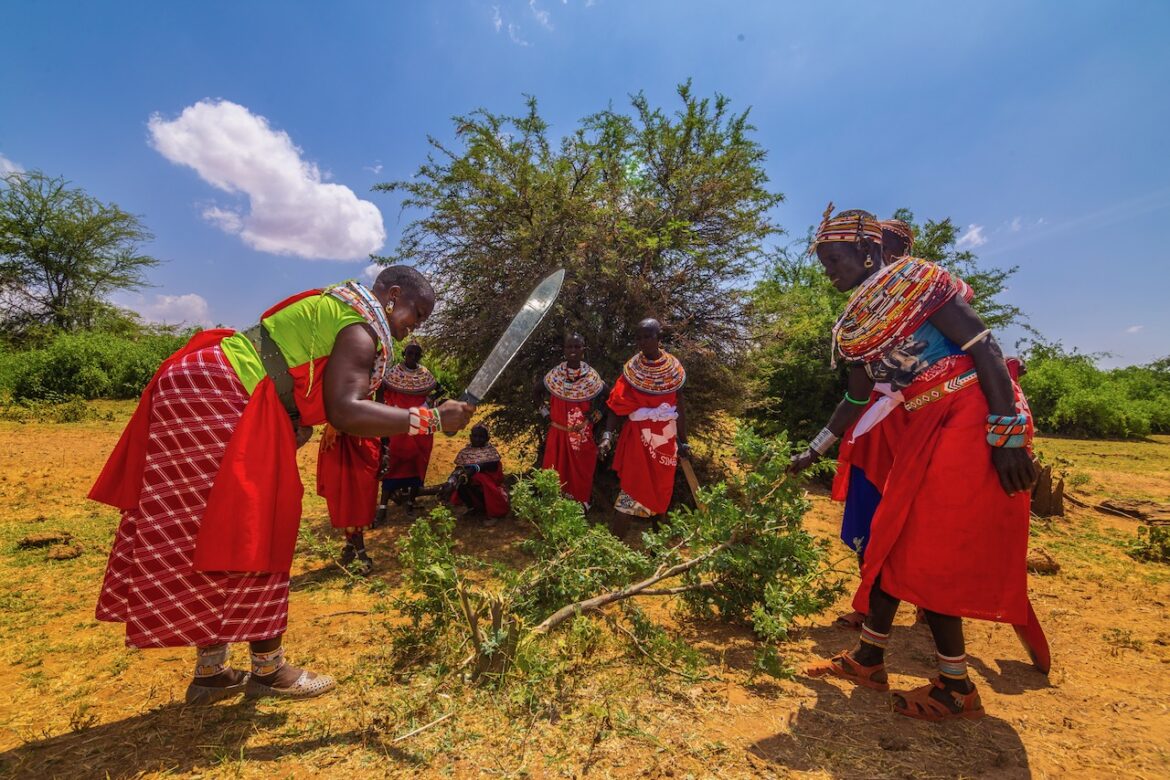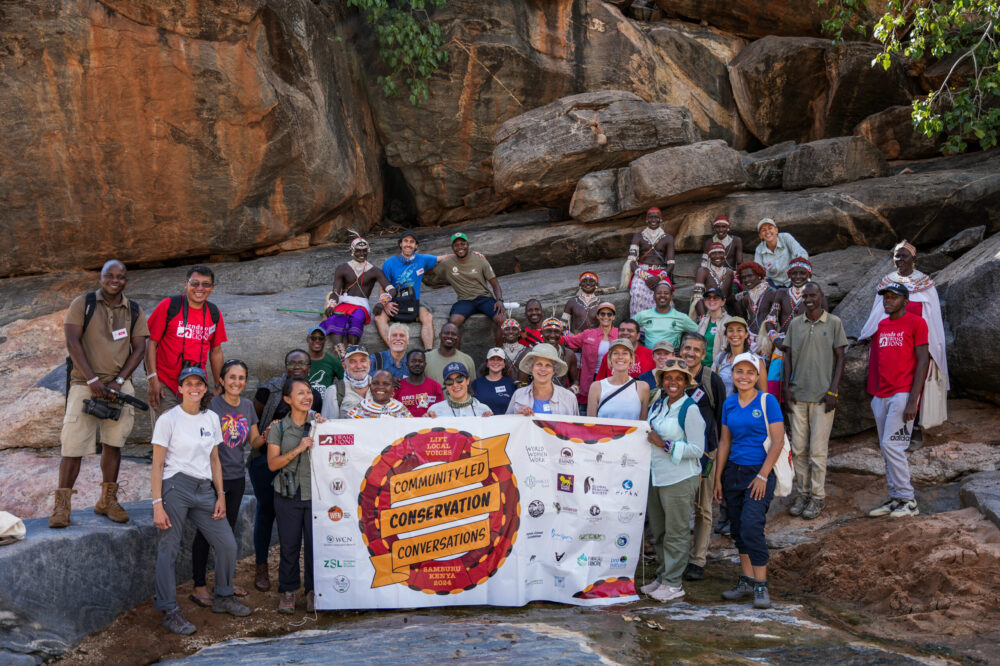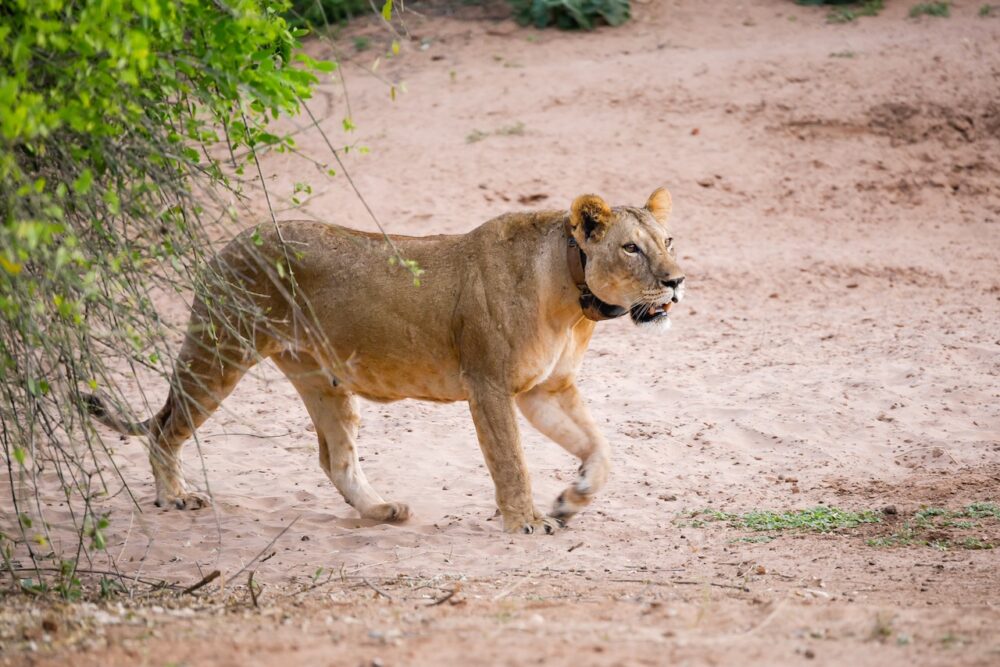The encroachment of the highly invasive Prosopis julifora, known locally as Mathenge, into our lion territories presents a complex dilemma. Witnessing its rapid proliferation in key lion areas raises significant concerns, given its notorious ability to outcompete indigenous vegetation and transform landscapes into dense, impenetrable thickets. However, amidst these challenges lie unexpected opportunities.
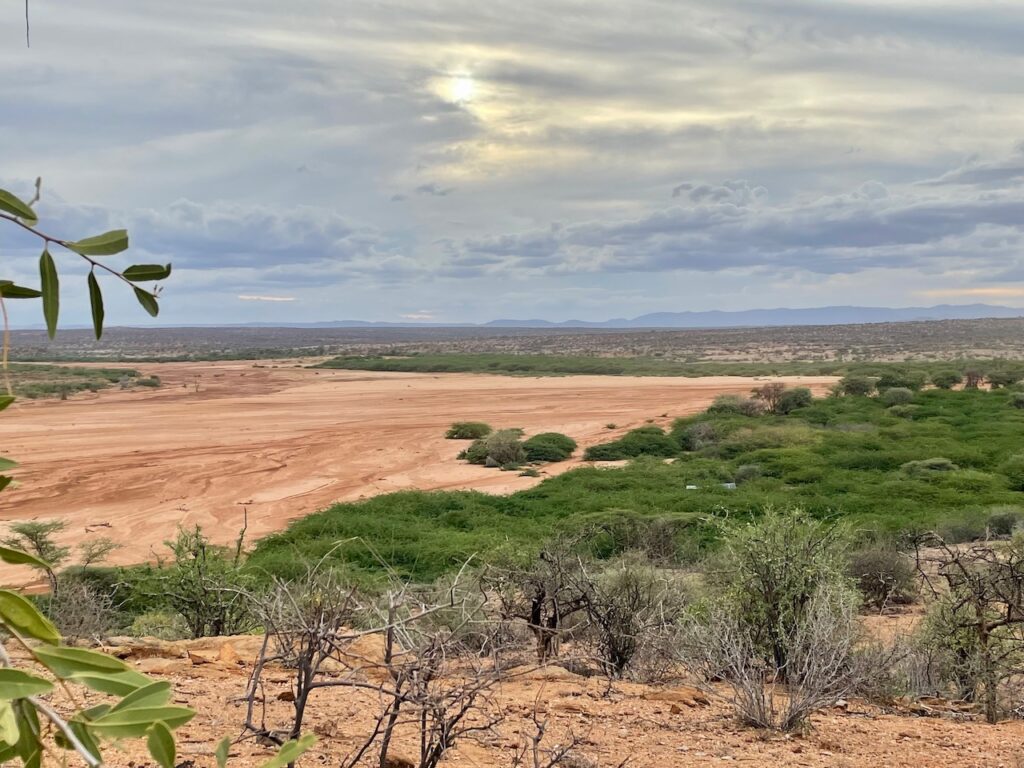
The vast invasive species forests
Mathenge’s swift growth has inadvertently created havens for lions, providing them with secure refuges for raising cubs and seeking shelter from threats. Yet, this comes at a cost – the displacement of vital indigenous cover and the erosion of critical wildlife habitat. In particular, the gradual disappearance of the indigenous toothbrush tree, a cornerstone of lion habitat, underscores the urgency of addressing the invasive species issue.
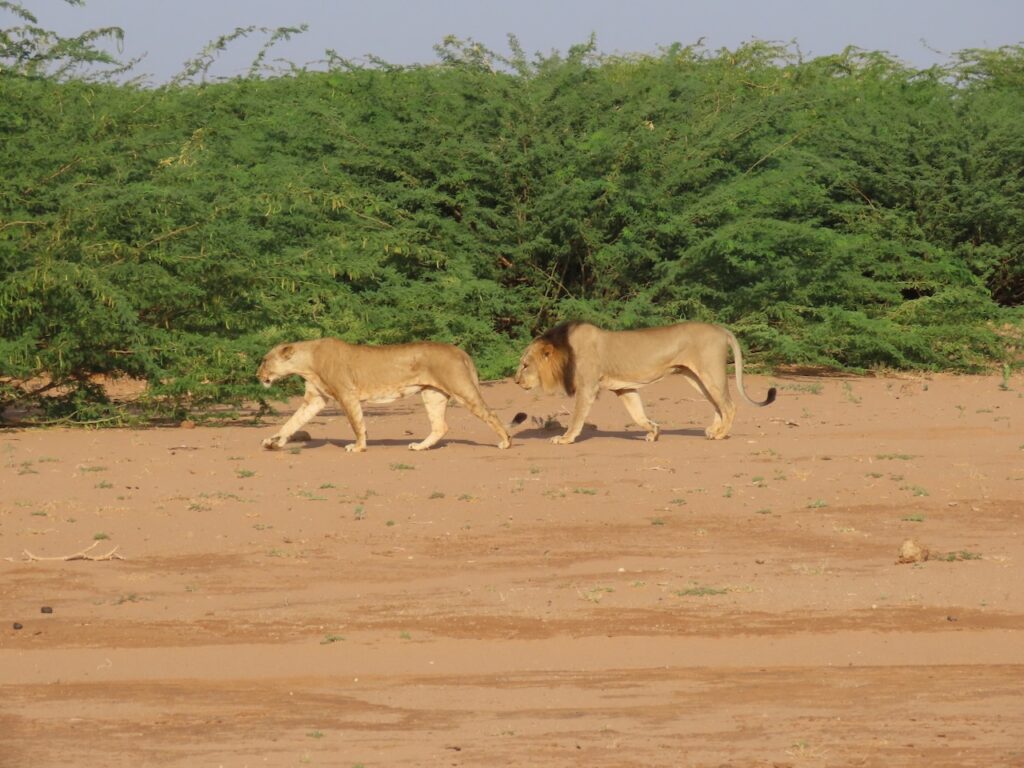
Kwenia and Narasha walk in front of the “Mathenge” forests
While the vast Mathenge forests seem daunting to tackle, we recognise the imperative to restore lion habitats by reclaiming territory from invasive species. Our efforts, led by Mama Simba through their lion habitat recovery initiative, involves strategic removal of smaller Mathenge bushes and experimenting with the cultivation of toothbrush trees, albeit with the acknowledgment that this process may span years.
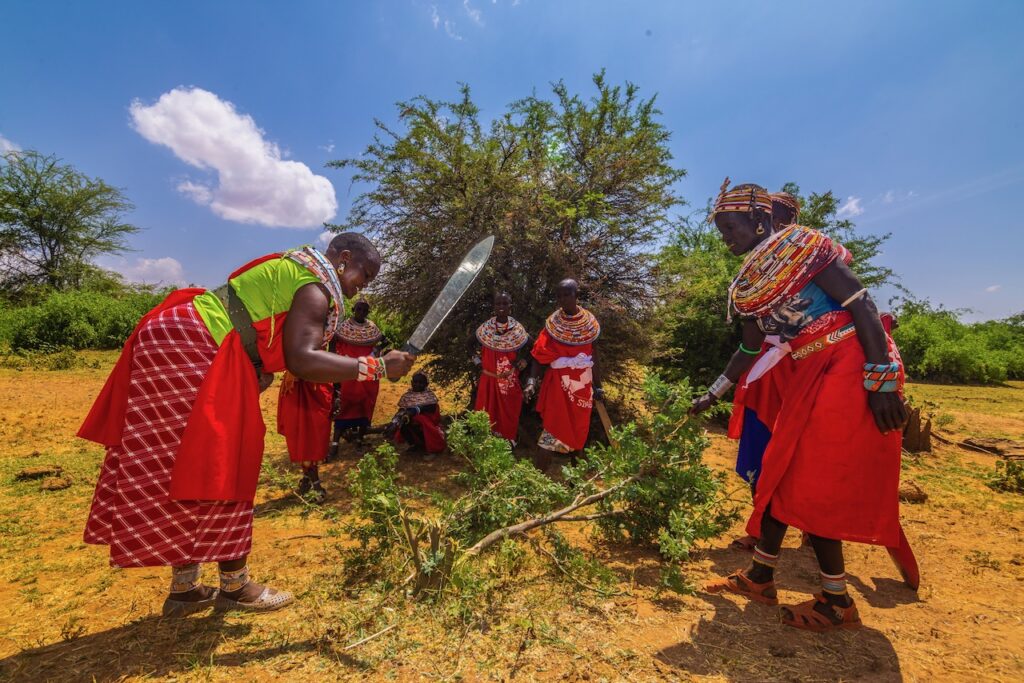
Mama Simba ladies remove “Mathenge” (c) Anthony Ochieng
It is clear that Mathenge offers only a transient solution to lion conservation, underscoring the necessity of long-term strategies centered on restoring landscapes with indigenous flora and managing invasive species effectively. By prioritising the preservation of lion habitats and promoting continued harmony between wildlife and communities, we can navigate this intricate landscape towards a sustainable future for both lions and ecosystems alike.
*This work is being done in collaboration with other partners.


